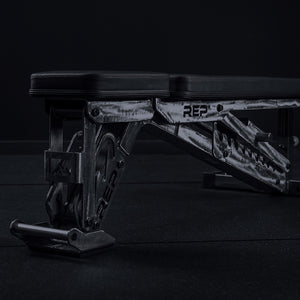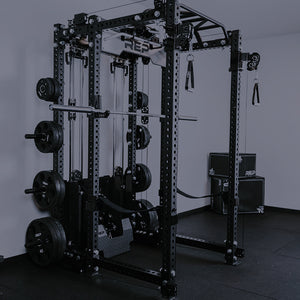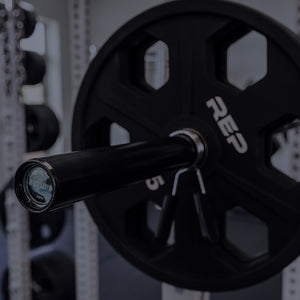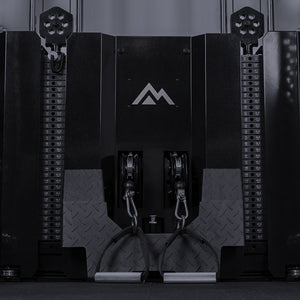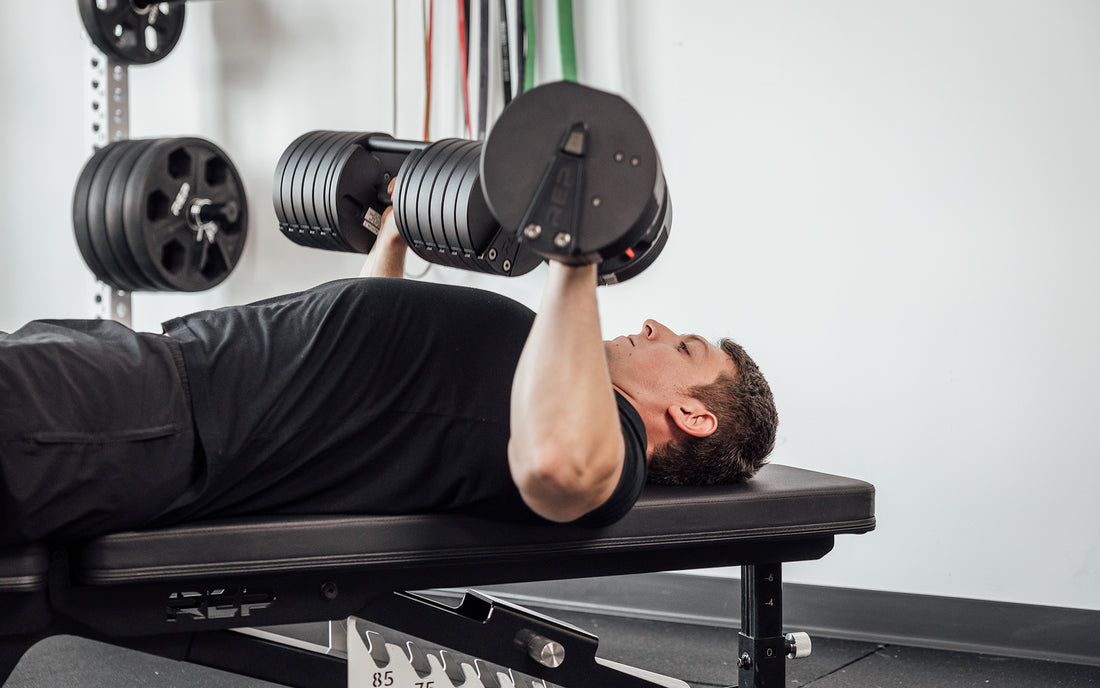
Dumbbells are one of the most common staples of the gym. Most hotels even have them, which goes to show how important they are, and even more so to understand. Dumbbells are simple yet powerful, easy to use but challenging to master. Dumbbells are the nimble kings of the iron jungle!
But when it comes to dumbbell exercises, one of the most popular and effective is the dumbbell bench press. Not only does it target several key muscles, but mastering the technique is essential for maximizing results and avoiding injury.
From understanding the muscles worked to perfecting your form, here’s everything you need to know about performing the dumbbell bench press.
What muscles does dumbbell bench pressing work?
The three muscles used in the different forms of pressing are:
- Your chest (pectoralis).
- Your shoulders (deltoids) — primarily the front head of your shoulders (anterior deltoids).
- Your triceps — or the muscles on the backs of your arms.
How to perform a dumbbell bench press

If you want to bench dumbbells like a pro, the first thing you need to do is determine which kind of press you want to do. The three primary pressing movements are flat (central chest), incline (upper chest), and decline (lower chest). Let’s break down how to go about each.
1. Flat dumbbell press
This exercise works your central chest, shoulders, and triceps with pretty equal distribution between the three.
- Select your dumbbell weight (if you’re a beginner, select a weight you can comfortably do 12-15 reps with).
-
Carry the dumbbells to your flat bench and sit down with them standing up on your lap, pulling them in against your body.

- Crunch down over the dumbbells as you roll backward onto the bench, keeping your back rounded to maintain control of getting the weights into position atop your chest.
- Once you’re down, plant your feet wide and push against the ground as though you’re trying to scoot yourself backward. This creates tension in the legs.
- Arch your back and pinch your shoulder blades, making three points of contact along the bench: your butt, upper back, and head. This creates tension throughout your entire body, and the only place for it to go is…dun, dun, dun…up and out through your arms. Bam! Bench press time!
- Focus on your flexed shoulder blades as you bring the dumbbells out to your sides. Your goal, as far as your perfect angle, is a balance between ensuring your back stays pinched and getting as much stretch across your chest as you can.
- Press the dumbbells up until your elbows are locked, squeezing inward slightly as you do.
- As you bring the dumbbells back down, control the motion. Don’t drop them, but lower them until you’ve maximized that balance between a full stretch across your chest and keeping your shoulder blades flexed.
- Repeat until your set is complete.
-
Perfect form for ending a dumbbell bench press set is a bit tricky for many beginners, but if you master it, it will be worth it.
After you’ve locked out your last rep, keep your arms extended. With the dumbbells held above you, lift your knees up into the air. From there, keeping your abs tight and arms locked, lower the dumbbells forward so that they hit your legs. This will sit you up with the dumbbells ending on your lap just as they began.
The reason this is important, and why it deserves the longest explanation of all the steps, is that you avoid being “that person” who just throws weights around like a drunk gorilla. By controlling the dumbbells -- from first retrieving them off the rack, all the way to returning them -- you demonstrate greater strength and control. *chef’s kiss*
- Pat yourself on the back for being a baddie.
2. Incline dumbbell press

This exercise works your upper chest, triceps, and hits a bit more of your shoulders.
(Many of these steps are the same as a flat bench press, but there are some key differences.)
- Select your dumbbell weight (12-15 rep goal for beginners).
- Carry the dumbbells to your incline bench and sit down with them standing up on your lap, pulling them in against your body.
- Crunch down over the dumbbells as you roll backward onto the inclined bench, keeping your back rounded to maintain control while getting the weights to your shoulders. If you reach a point of strength where your arms are not enough to get the heavier dumbbells up to your shoulders, a simple trick is to use your knees one at a time to hoist them up with explosive motions.
- Once you’re in place, plant your feet wide and push against the ground as though you’re trying to scoot yourself backward. Get that leg tension.
- Arch your back and pinch your shoulder blades, making three points of contact along the bench: your butt, upper back, and head.
- Focus on your flexed shoulder blades as you bring the dumbbells out to the sides of your shoulders. Your goal remains a balance between ensuring your back stays pinched and getting as much stretch across your upper chest and shoulders as you can.
- Press the dumbbells up until your elbows are locked and the weights are above your head, squeezing them inward slightly as you do.
- Control the negative motion. Don’t drop them but lower them until you’ve again maximized the balance between a full stretch across your chest and shoulders and keeping your shoulder blades flexed.
- Repeat until your set is complete.
- Again, demonstrate control by lowering the dumbbells to your shoulders and then bringing them down to your lap.
- High-five the mirror and give yourself a wink. You’ve earned it.
What is the ideal angle for incline bench?

The ideal bench incline angle for an incline bench press is typically 30 to 45 degrees. This angle effectively targets the upper portion of the chest (the clavicular head of the pectoralis major) while also engaging the shoulders and triceps.
A steeper angle, closer to 45 degrees, will shift more emphasis to the shoulders, while a lower incline closer to 30 degrees focuses more on the upper chest. Adjusting within this range can help you find the best position based on your goals and comfort.
3. Decline dumbbell press

This exercise works your lower chest, a little less of your shoulders, and a bit more of your triceps.
Note: While this is a perfectly fine exercise, it’s a bit trickier to get in and out of. That’s why many trainers recommend deferring to decline barbell bench press or dips. Both accomplish similar goals.
Regardless, here’s how to master a decline bench press for you dumbbell diehards.
- Select your dumbbells (advisably a little lighter for the sake of the finagling in and out of position) and hold them at your sides as you get your legs up into the decline bench. If you want to lift heavier weights, it’s best to have a partner hand them to you once you’re locked in.
- Lying back at a decline, arch your back and pinch your shoulder blades, making three points of contact along the bench: your butt, upper back, and head.
- Focus on your flexed shoulder blades as you bring the dumbbells out to the sides of your lower chest. Your goal remains a balance between ensuring your back stays pinched and getting as much stretch across your lower chest as you can.
- Press the dumbbells up (it’ll feel like you’re pressing them down, but it is relative upright) until your elbows are locked and the weights are above your upper stomach, squeezing them inward slightly as you do.
- Control the negative motion. Don't drop them but lower them until you’ve maximized the balance between a full stretch across your lower chest and keeping your shoulder blades flexed.
- Repeat until your set is complete.
- As before, getting out of a decline bench is a bit trickier. Unless you have super-duper abs, bringing the dumbbells to your knees and doing a sit-up is unlikely. Instead, either have a partner take the dumbbells from you so you can exit the bench, or carefully place them on the ground from your declined position. No gorilla mode.
- High-five yourself in public for being adventurous!
What’s the ideal angle for decline bench press?

For the decline bench press, the ideal bench angle is typically 15 to 30 degrees downward. This angle specifically targets the lower portion of the chest (the sternocostal head of the pectoralis major) while still engaging the shoulders and triceps.
A steeper decline, closer to 30 degrees, will place more emphasis on the lower chest, while a shallower decline around 15 degrees can offer a more balanced distribution across the chest muscles.
Overhead dumbbell press *bonus exercise*

If you want to take your chest out of the equation and focus on building your shoulders, set your bench all the way up to 90 degrees. From there, replicate the steps for “incline” and you’ll build some super overhead pressing power in both the front and side (anterior and medial) heads of your shoulders.
Is dumbbell bench press better than barbell bench press?

The simple answer is no. Neither barbell nor dumbbell presses are straight up better. Depending on your goals, you may focus on one over the other, but both serve a variety of purposes with numerous benefits.
Let’s look at the pros of both.
Barbell bench press pros:
- Easier to stabilize, as both hands work in tandem to move the bar from the height of the lift to the bottom and back.
- Easier to set up and get into position. Without having to un-rack weights, get them to the bench, move into position, and then return them to the rack upon completing your set, you save energy.
- Easier to reach depth. Touching your chest with the bar forces your hands deeper, therefore getting a better stretch across your chest to maximize the efficiency of your lift. This can still be achieved with dumbbells, but it takes more of a cognitive effort.
- Strength focus. While dumbbells will still certainly aid in the development of strength, if you want pure, unadulterated power, the barbell is the tool for the job.
Dumbbell bench press pros:

- Development of stability. Each hand working individually forces the muscles of the forearm, triceps, shoulders, and pectorals to work harder in order to balance and control the weight. This helps develop strength, shape, and functional movement—especially in beginners.
- Catering to your joints. Dumbbell pressing allows your shoulders to move independently, as well as your elbows and wrists. What this adds up to is personal supination (rotation of wrists), allowing you to customize your movement to best suit your body. If you feel limited in your range of motion on barbell bench press due to injury, disability, or any other reason, lower weight on dumbbells can help you circumvent those challenges and find a motion more comfortable on your joints.
- Better sculpting. To piggyback off the aforementioned perk, being able to utilize different angles and movements with dumbbells provides lends toward more well-rounded aesthetics.
When doing dumbbell bench press, how far do I arch my back?
Proper form should always include an arched back, but you do not need to go as far as the wildly arched backs of competitive powerlifters. The purpose of their form is to reduce the range of motion from their chest to lockout. This allows them to press heavier and heavier weights. Unless you are entering a powerlifting career, it is not necessary to develop this ability.
All you need to focus on is that your shoulder blades are flexed and that your lower back is arched enough to transfer tension through the rest of your body to your arms. When you are benching barbell or dumbbell, your body fills with pressure and tension. If you do not arch, your center essentially goes limp and loses all that power. Plus, it just helps keep that spine safe, and no gym clout is worth putting that at risk.
Ultimately, whether your chest goal is strength, definition, control, or any combination of the three, dumbbells are an invaluable tool to have in your bench-pressing bag.
Learn More
What makes the best adjustable dumbbell?
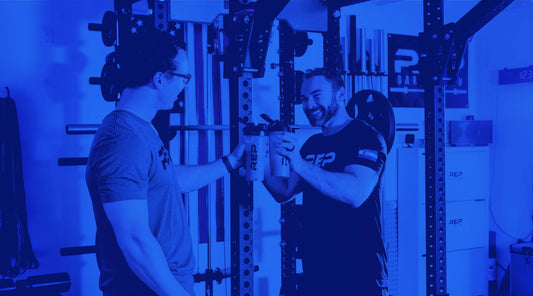
NEWSLETTER SIGNUP
Product launch information, promotions, blogs, and REP news.

